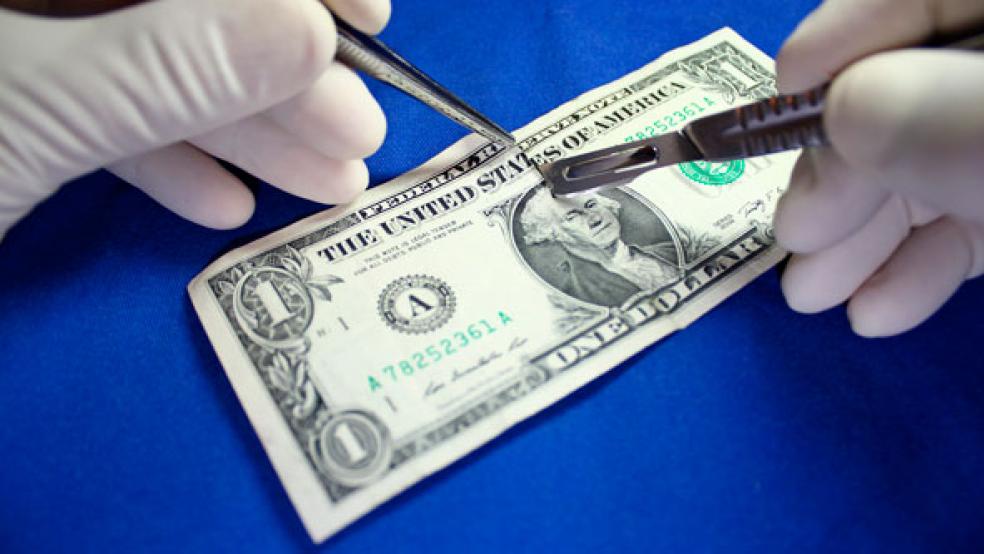I received my health insurance rebate in the mail the other day – all $73.78 of it. While this check didn't put much of a dent in the $6,300 a year ($529.88 per month) I pay for my family's health insurance premium, it raised a number of questions.

The rebate is supposed to provide better care for my family and ultimately reduce health-care costs for us. Does it? I have no idea if my insurer is negotiating better deals with providers or investing my premiums in finding more efficacious care and procedures. Since we have a high-deductible individual policy with at least $6,250 out of pocket this year – more, in real-world terms, considering that office visits and drugs aren't covered – I won't see any actual savings until I cross that annual threshold.
Having said that, I'm still intrigued by the rebate I received. I pocketed a similar check last year, which was a surprise, but I had to look deeper to find out if it was a sop or a meaningful financial incentive to improve the nature of health-care spending.
HOW THE REBATE WORKS
The rebate is based on whether an insurer is toeing the line on something called medical loss ratios (MLRs). Under the Affordable Care Act, the government requires that insurers spend from 80 percent (individual plans) to 85 percent (small groups) of revenue they get from premiums on medical care or improving services.
The ratio was largely designed to put a cap on marketing spending and direct more money into actual care. Another way of looking at it is that company can't keep more than 20 percent of the money it gets from premiums for administrative and sales expenses.
Also known as the "80/20" rule, the MLR was a creative way around directly taxing insurers to keep premiums at a more reasonable level. Politically it was golden: Instead of levying a fine on insurers, who would send the money back to the government or simply raise premiums, the insurers had to send a rebate to consumers. That way, the Obama administration could trumpet the fact that voters got something back from companies that spent too much on marketing and overhead.
Last year, according to the Department of Health and Human Services, the average rebate check was about $100. President Obama claimed that the MLR led to $3.4 billion in reduced premiums, which was challenged by the Washington Post fact checker recently. The paper claimed that amount is a rough estimate that's difficult to pin down.
WHAT THE REBATES MEAN
Without the ability to compare insurers side-by-side to see how efficiently they spend premium dollars on care, the rebate is like finding money on the sidewalk. It's impossible to tell how it got there or if it's an effective means of reducing premiums.
The main difficulty is the ability to ask the question: What would premiums have been like if the MLR hadn't been in place? Since the Affordable Care Act is only a few years old, there just isn't much data. In the world of statistics, you need things like baselines and averages to do some meaningful math.
The Kaiser Family Foundation, which tracks health issues incisively, came to this conclusion:
If insurers’ preliminary estimates hold true, this year’s rebates (at a total of $571 million across all markets) are expected to be about half the amount of last year’s $1.1 billion in insurer rebates. Smaller rebates, however, are not an indication that consumers are now saving less money as a result of the MLR provision, but rather that insurers are coming closer to meeting the ACA’s MLR requirements and that this provision is having its intended effect of consumers getting more value for the money they spend on premiums…. Perhaps ironically, when the MLR provision is working as intended and insurers set premiums to meet the thresholds, consumers save money but are less likely to get a check in the mail as tangible demonstration of those savings.
The government data available to the public (PDF) offers little help on whether the rebates are truly reducing the overall cost of care.
- When I looked at rebates paid in Illinois (where I live) last year, I discovered that my insurer paid the highest amount any company in the state – more than $3.3 million in combined individual and group rebates. Does that mean my insurer was routinely spending too much money on marketing? Or is there some relationship between marketing and servicing individual and small groups and how much money they spend on care? Or does the company have the largest share of the Illinois market?
- I'd like to know how efficiently insurers operate – that is, how much they actually spend on care. (Charities are routinely rated on how much they spend on "program expenses" by several groups).
- What are insurers doing to lower the costs of care and how do they compare to other insurers? Are they aggressively discounting hospital and clinical procedures? Are they regularly monitoring academic reports to see which procedures are most effective and what they should cost?
Ultimately, the rebate approach might prove to be a better carrot-and-stick approach to lowering premium costs. Companies want to meet the MLR guidelines so that they don't have to send out rebates. But will that ultimately reduce what they are paying providers and trim the cost of care across the board, which will also have a long-term impact on cutting premiums? More study is needed.






